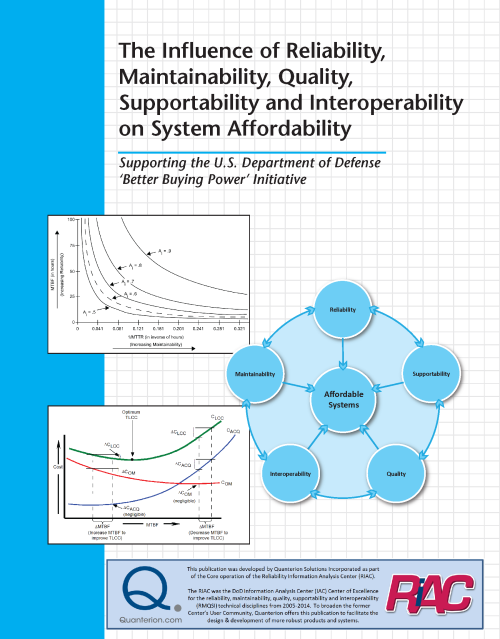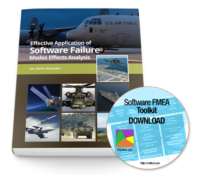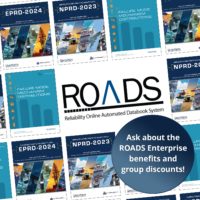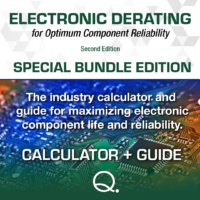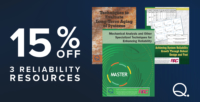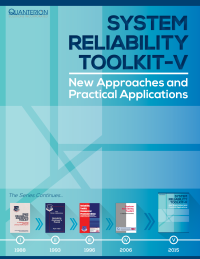| 1. Introduction |
1 |
| 1.1 A Note on Return on Investment (ROI) |
4 |
| 2. The Impact of Reliability on Acquisition Costs and ROI Assessment |
5 |
| 2.1 Availability KPP |
8 |
| 2.1.1 Materiel Availability |
8 |
| 2.1.2 Operational Availability |
8 |
| 2.2 Reliability KSA |
8 |
| 2.3 Ownership Cost KSA |
8 |
| 2.3.1 Total Life Cycle Cost |
9 |
| 2.4 Customer/End-User Reliability Requirements and Expectations |
12 |
| 2.4.1 Warranties |
13 |
| 2.4.2 Cost-Benefit Analysis (CBA) |
16 |
| 2.4.3 Essential Performance Requirements (EPR) |
21 |
| 3. The Impact of Maintainability on Acquisition Costs and ROI Assessment |
23 |
| 3.1 The Concept of Availability |
27 |
| 3.1.1 Materiel Availability (AM) |
29 |
| 3.2 The Effect of Maintainability on Cost |
30 |
| 4. The Impact of Manufacturing and Quality on Acquisition Costs and ROI Assessment |
33 |
| 4.1 Manufacturing Readiness Levels |
36 |
| 4.2 Manufacturing Development Guide Best Practices |
36 |
| 4.2.1 Manufacturing Capability Assessment and Risk Management |
36 |
| 4.2.2 Production Cost Modeling |
36 |
| 4.2.3 Key Suppliers |
37 |
| 4.2.4 Key Characteristics and Processes |
37 |
| 4.2.5 Variability Reduction |
37 |
| 4.2.6 Virtual Manufacturing & Virtual Prototyping |
37 |
| 4.2.7 Design Trade Studies |
37 |
| 4.2.8 Process Failure Modes, Effects and Criticality Analysis |
38 |
| 4.2.9 Product and Process Validation |
38 |
| 4.2.10 Manufacturing Process Control and Continuous Improvement |
38 |
| 4.2.11 Factory Efficiency |
38 |
| 4.2.12 Obsolescence and Diminishing Manufacturing Sources (DMS) |
38 |
| 4.2.13 Supplier Process Audits |
39 |
| 4.2.14 Counterfeit Parts Prevention |
39 |
| 4.2.15 Improving Product Affordability |
39 |
| 4.3 Quality Management Systems |
44 |
| 5. The Impact of Supportability on Acquisition Costs |
49 |
| 5.1 Major Supportability Criteria |
51 |
| 5.1.1 Cost |
51 |
| 5.1.2 Operational Readiness |
51 |
| 5.1.3 Manpower and Personnel Constraints |
51 |
| 5.1.4 Open-System Supportability Approaches |
52 |
| 5.2 Supportability Analysis Tools |
52 |
| 6. The Impact of Interoperability on Acquisition Costs |
55 |
| 7. Development of Sustainment Requirements |
59 |
| 7.1 Reliability, Availability, Maintainability and Cost Report Overview |
59 |
| 7.1.1 “Who” Documents the Sustainment Requirements Rationale? |
59 |
| 7.1.2 “Why” Develop a RAM-C Rationale Report? |
62 |
| 7.1.3 “When”: Overview of the RAM-C Rationale Report from Start to Finish |
63 |
| 7.1.4 “How”: Overview of the RAM-C Rationale Report from Start to Finish |
64 |
| 7.2 General Documentation Approaches when Developing the Sustainment Metrics |
65 |
| 7.2.1 Sustainment Metric Tracking Matrix |
65 |
| 7.3 Maintenance Concept and Support Plan Considerations |
67 |
| 7.4 Sustainment Requirements Development |
68 |
| 7.4.1 Materiel Availability |
68 |
| 7.4.2 Reliability |
71 |
| 7.4.3 Ownership Cost |
71 |
| 7.5 Developing a Balanced Solution: Performance and Sustainment |
71 |
| 7.5.1 The Effect of Requirements on Life Cycle Costs |
71 |
| 7.5.2 How Warfighter Capability Needs Are Used To Establish System Requirements |
75 |
| 7.5.3 Why Materiel Availability is Different from Operational Availability |
76 |
| 7.5.4 Sub-Components of the Availability KPP: Reliability KSA and Total Ownership Cost KSA |
77 |
| 7.5.5 Considerations for Developing Sustainment Metric Requirements |
81 |
| 8. Example Approach to Sustainment KPP Requirements Development |
89 |
| 8.1 Materiel Solution Analysis Phase Considerations |
89 |
| 8.1.1 Determination of the Minimum Reliability Requirement |
89 |
| 8.1.2 Maintenance and Product Support Concepts Development |
89 |
| 8.1.3 Determination of OC and AM Design Values through Tradeoffs |
90 |
| 8.1.4 Sustainment Requirement Refinement throughout Program Development |
90 |
| 8.2 Example of Sustainment Requirements Development |
90 |
| 8.2.1 Concept of Operations Analysis |
91 |
| 8.3 OR2CA – A Microsoft Excel® Workbook Based on the RAM-C Rationale Report Manual |
92 |
| 8.3.1 ‘Inputs and Calculation’ Worksheet (STEPS 1 through 5) |
92 |
| 9. Translating Operational Reliability Needs into Affordable System Reliability Requirements |
109 |
| 9.1 Background |
109 |
| 9.2 Examining the Problem |
109 |
| 9.3 Proposing a Solution |
115 |
| 9.4 OR2CA – Continuation of Example |
117 |
| 9.4.1 ‘Life Unit-Based 50% CL’ Worksheet (STEP 6) |
117 |
| 9.4.2 ‘Life Unit-Based Testing’ Worksheet (STEP 7) |
119 |
| 9.4.3 ‘Life Unit-Based Rel Demo’ Worksheet (STEP 8) |
119 |
| 10. Optimizing Reliability Improvement |
123 |
| 10.1 Cost Optimization for Life Unit-Based Design and Test Reliability |
123 |
| 10.1.1 Introduction to Sequential Testing |
124 |
| 10.1.2 Sequential Tests (SPRTs) for Continuous Random Variables |
124 |
| 10.1.3 Improving the SPRT Calculations |
128 |
| 10.1.4 The relationship between the Exponential and Poisson Distributions |
130 |
| 10.1.5 Average Sample Number, Average Test Time, and Test Truncation |
131 |
| 10.1.6 Combining Confidence Bounds with the Sequential Test Process |
132 |
| 10.2 OR2CA – Continuation of Example |
133 |
| 10.2.1 ‘Cost Optimization for Life Unit-Based Design and Test Reliability’ Worksheet (STEP 8) |
133 |
| 10.2.2 Reliability Growth Test Planning (AMSAA/Crow) Based on Life Units (STEP 9) |
135 |
| 10.2.3 Cost of Reliability Improvement and Testing |
137 |
| 10.2.4 Reliability Program Cost Optimization |
144 |
| 10.2.5 Total Life Cycle Cost Summary |
145 |
| 11. Determining the Impact of Reliability Investment Costs |
149 |
| 12. Summary, Conclusions and Recommendations |
159 |
| 12.1 Summary and Conclusions |
159 |
| 12.2 Recommendations |
160 |
| 12.2.1 Basic Recommendations |
160 |
| 12.2.2 Enhancement of the RIAC TRACK Methodology and Software Tool |
161 |
| 13 Bibliography |
165 |
| 13.1 Better Buying Power Related Documents |
165 |
| 13.2 Standards and Handbooks |
167 |
| 13.3 General |
168 |
| Appendix A: Acronym List |
173 |


